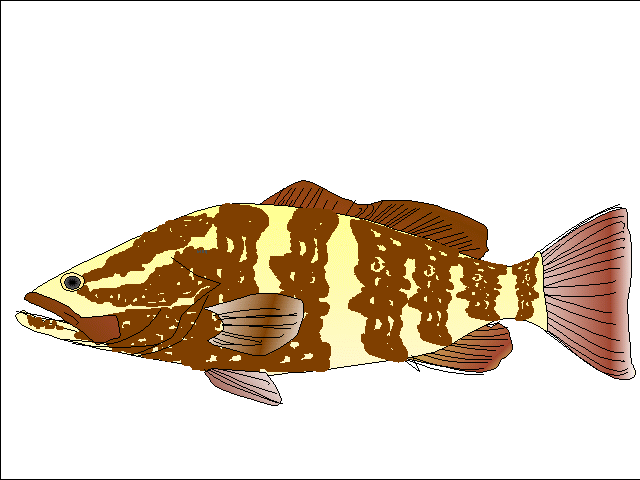Name/Relations || Range/Sizes || Habitat & Habits || Notes
 |
|
| Note: Can Change color swiftly, but retains five bars on side |
Common Name:
Nassau Grouper
Other Common Names:
Nassau
Scientific name:
Epinephelus striatus
Family:
Serranidae (Sea Basses)
Related Species:
Jewfish, Red Grouper, Warsaw Grouper
| Range: The Carolinas to Brazil, but most common in the Southern Gulf of Mexico, Bermuda, and the Caribbean. |
Sizes: To 100lbs, more common 5lbs-15lbs.
Habitat: Juveniles inshore in estuaries and bays, adults on inshore and offshore reefs, wrecks, jetties, pilings to depths of 80 feet. Commonly frequents shallow water reefs.
Spawning Habits: Changes gender- starts as female and becomes male as it ages. Spawns over reefs and wrecks from 15 feet to 60 feet in depth in great spawning aggregations. The eggs hatch and young hang near the surface and around vegetation, and in shallow structure.
Feeding Habits: If it moves and fits in its mouth, it is dinner. An occasional cruiser, but primarily an ambush predator, that lurks in or near structure. When a food item (mostly fishes) approaches, the grouper darts out and engulfs it, then retreats to near its reef. Will also eat freshly dead fishes if they are presented near its lair. One of the least wary of groupers.
Notes: A common companion to divers in the Bahamas and Bermuda, the Nassau is very curious and will even eat directly from a divers hand. If you find them, you can probably catch them, and they will hit a variety of baits and lures such as jigs and plugs, and baits such as blue runners, pinfish, mullet, grunts, small snappers, pilchards, and cigar minnows (scads). Since they reside, feed, and spawn in shallow water, they are very susceptible to over fishing, especially when in a spawning group.